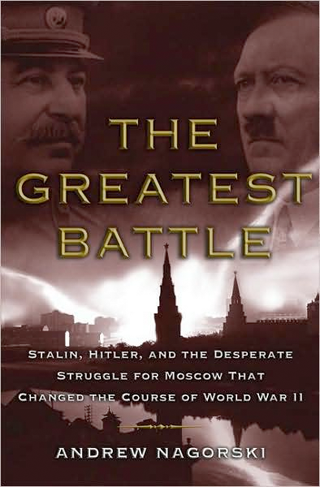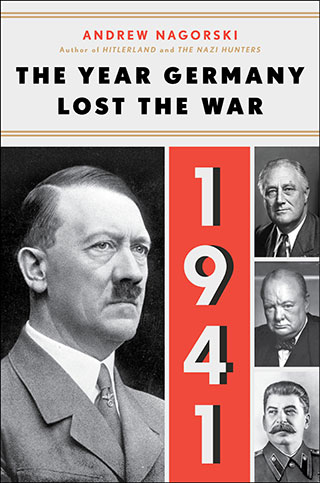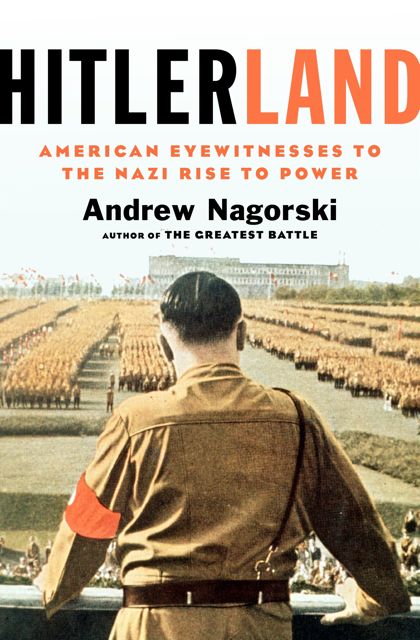Here’s a generally accepted syllogism: The Weimar Republic saw an explosion in the arts, particularly of modern forms like expressionist painting and atonal music. When Hitler swept away the freedoms of the Weimar era and assumed dictatorial powers, he targeted “degenerate art”—the Nazis’ designation for anything modern of which they disapproved. Ergo, the country’s most creative artists were forced into immediate opposition to Hitler’s regime.
There’s just one problem. As Jonathan Petropoulos convincingly demonstrates, this syllogism is sloppy at best—and in all too many cases, it’s dead wrong. To be sure, there were artists, such as the composer Kurt Weill and the playwright Bertolt Brecht, who fled Germany as soon as Hitler took power, both for personal and political reasons (Weill was Jewish, Brecht was a Marxist). Marlene Dietrich, who had already launched her career in Hollywood, famously and contemptuously rebuffed efforts by the Nazis to lure her back. She chose, instead, to become an American citizen, and during the war she made anti-Nazi broadcasts and offered memorable performances for American troops in North Africa and Europe.
But Petropoulos, who has written extensively about the cultural scene in the Nazi era, focuses on the prominent artists who stayed behind—at least for as long as they could. Although a few tried to help Jews and others who were targets of the new regime, there are no profiles in courage here. Most of the artists desperately sought to continue their careers at any price, which meant serving the Nazis and constantly seeking to prove their loyalty. In the land of Faust, they eagerly followed a Faustian script.
In the early years of Nazi rule, many artists clung to the hope that the new regime would tolerate some manifestations of modernism. Yes, Hitler had dismissed the movement’s proponents in Mein Kampf as “spiritual degenerates or slimy swindlers.” But the artists reassured themselves that there were “decent people” in the Nazi leadership who collected modern paintings and sculptures. Foreign Minister Joachim von Ribbentrop and his wife commissioned a portrait of their children from the expressionist painter Otto Dix, and chief propagandist Joseph Goebbels talked about a “healthy view of Expressionism.”
When it came to something like designing service stations for the new autobahns, even Hitler, the artist manqué, admitted that modernist design was more appropriate than “Romantic eccentricity or anachronistic buildings.” He wanted industrial projects to convey a suitable contemporary style. Moreover, Petropoulos argues that initially, “Hitler refrained from making his personal views state policy,” which allowed “pockets of tolerance” of modern art to survive. That is, until 1937, when the Nazis staged their infamous “Degenerate Art” exhibition, signaling an end to whatever experimentation remained.
While Petropoulos ably charts the Nazis’ tightening stranglehold on the arts, the real value of this book is its unsparing examination of the behavior of Germany’s artists as they tried to adapt to the rapidly evolving new realities. Petropoulos divides his subjects into two groups: those who tried to seek accommodation with the authorities but failed, and those who largely succeeded. Neither group presents a pretty picture.
The composer Paul Hindemith exemplified both the cynicism and the naïveté of those who believed they could ingratiate themselves with the new regime. Writing to friends in September 1933, he proclaimed that he “had been asked to cooperate and had not declined.” He was convinced that he would be able “to export German culture, beginning with music,” which would be very much in tune with the goals of the Nazis’ Fighting League for German Culture. In April 1933, Hindemith met with that group’s leaders and reported to his publisher, “I got the impression (after satisfying them that I was neither a half nor any other fractional Jew) that they have a good opinion of me there.”
Hindemith felt no embarrassment in discussing his obsequious behavior—despite the fact that his wife was half-Jewish and he was friends with Jewish musicians. Nor did he have any hesitation about contrasting his work with the “sonic orgies” and “decadent intellectual efforts” of Jewish composers such as Weill and Arnold Schoenberg. By presenting himself as a Germanic musician, he was successful in the early days of the Third Reich, and he was even appointed to the Reich Chamber of Music in 1934. Two years later, he signed an oath of allegiance to Hitler.
But Hitler still viewed Hindemith’s music as too modern and, therefore, as suspect. Hindemith was included in the “Degenerate Music” exhibition that opened in Düsseldorf in May 1938, thus ending his career in the Third Reich. He was featured alongside Weill and others, accused of having “deteriorated into a Jewish sensibility.” This prompted him and his wife to move to Switzerland, and then to the United States, where he taught at Yale. But writing from the ship that took him across the Atlantic, he declared: “If I could return [to Germany] with good grace and with the prospect of a somewhat secure existence I would have the ship turned around right away.”
Like the Bauhaus founder and famed architect Walter Gropius, who left Germany in 1934 for Great Britain and later ended up teaching at Harvard, Hindemith and other artists in this group were not driven into exile by opposition to Hitler. As Petropoulos repeatedly points out, it was not for a lack of trying that they were not accepted by the Nazis; far from it. And like Hindemith, Gropius held out the hope that he might return to Germany, in his case as late as 1939.
Some never left but nonetheless found themselves banished. A prime example was the expressionist painter Emil Nolde, whose support for the Nazis dated back to the early 1920s. The Nazis burned many of his works and forbade him from painting more. Yet he secretly painted 1,300 watercolors during the war years, his “unpainted pictures,” as he called them. They were less vulnerable to discovery because they did not exude the odor that oil-based paintings did.
At times, Petropoulos’s workmanlike style drains the drama from these stories. But he has done an impressive job assembling evidence about the behavior and attitudes of the artists, and the result is a fascinating collection of human portraits. When it comes to the better-known cases of those who succeeded in working for the Nazis to the end, his profiles of filmmaker Leni Riefenstahl and actor Gustaf Gründgens are particularly fresh and insightful. While Riefenstahl occasionally helped Jews, she did not hesitate to use her influence to punish those who displeased her. During the filming of Tiefland, based on the opera of the same name, she threatened a Roma slave laborer who had been brought in as an extra. When the young woman refused to beg Riefenstahl for forgiveness after she fled the set and was captured, the famed director told her: “You’ll go to a concentration camp!” The woman was dispatched to Ravensbrück.
Both Riefenstahl and Gründgens prospered because of the propaganda films they made; they enjoyed fame and lavish privileges, including handsome payments from the Nazi rulers. More remarkably, perhaps, many such artists not only continued their careers but also continued to garner critical acclaim after the war. Those who were driven into exile early also benefited from the popular misconception that they had been ardent opponents of Hitler. On the centenary of Gropius’s birth, for example, the Bauhaus-Archive in Berlin described him as a “declared enemy of Fascism.”
While Riefenstahl and Gründgens could hardly deny their artistic roles in the Third Reich, they maintained the pretense that those roles had nothing to do with Nazi ideology—or, in Riefenstahl’s case, that her close personal relationship with Hitler signaled approval of his genocidal policies. On May 9, 1946, Gründgens returned to the Deutsches Theater in Berlin to offer his first postwar performance. The opening line of his character included the words “das ist grotesk.” The same could be said about Gründgens—and about so many of the artists who take center stage in this revealing book.
Andrew Nagorski, a former Newsweek bureau chief in Berlin and Moscow, is the author of Hitlerland: American Eyewitnesses to the Nazi Rise to Power.









